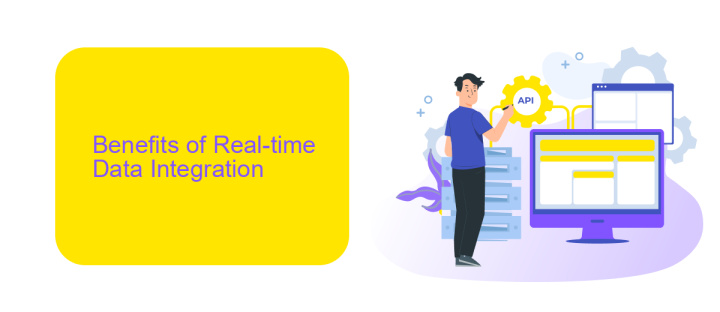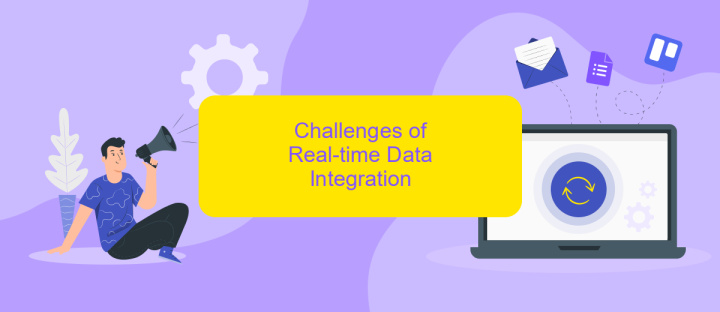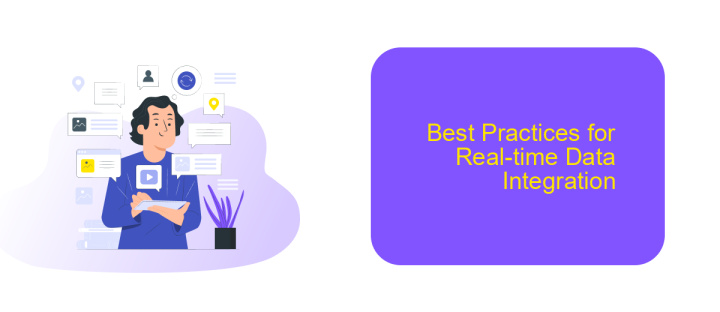Real-time Data Integration
Real-time data integration is a critical component in today's fast-paced digital landscape, enabling organizations to seamlessly merge and analyze data from multiple sources as it is generated. By ensuring up-to-the-minute accuracy and consistency, real-time integration empowers businesses to make informed decisions swiftly, enhancing operational efficiency and driving competitive advantage. This article explores the key technologies, benefits, and challenges associated with real-time data integration.
Introduction to Real-time Data Integration
Real-time data integration is a critical component for modern businesses aiming to stay competitive in an increasingly data-driven world. It involves the continuous, seamless merging of data from various sources into a unified view, enabling immediate analysis and decision-making. This approach contrasts with traditional batch processing, where data is integrated at scheduled intervals, often resulting in outdated information.
- Immediate access to up-to-date information
- Enhanced decision-making capabilities
- Improved operational efficiency
- Scalability to handle growing data volumes
Several tools and services facilitate real-time data integration, one of which is ApiX-Drive. This platform allows businesses to effortlessly set up integrations between various applications and data sources. With features like automated workflows and real-time data synchronization, ApiX-Drive ensures that your data is always current and accessible, empowering you to make informed decisions quickly and efficiently.
Benefits of Real-time Data Integration

Real-time data integration offers numerous advantages, significantly enhancing business operations. By enabling continuous data flow between systems, it ensures that decision-makers have access to the most up-to-date information. This immediacy facilitates more informed and timely decisions, ultimately driving better outcomes. Furthermore, real-time integration reduces the risk of data discrepancies and errors, as data is consistently synchronized across platforms.
Implementing real-time data integration can be streamlined with tools like ApiX-Drive, which simplifies the process of connecting various services and applications. ApiX-Drive automates data transfers, ensuring a seamless and efficient integration without the need for extensive coding knowledge. This not only saves time but also reduces the complexity and cost associated with manual data handling. As a result, businesses can focus on leveraging their data insights for strategic growth and innovation.
Challenges of Real-time Data Integration

Real-time data integration presents several challenges that organizations must address to ensure seamless and efficient data flow. These challenges can impact the performance, reliability, and scalability of data integration solutions.
- Data Latency: Ensuring minimal latency is crucial for real-time data integration. Delays in data processing can lead to outdated information and hinder decision-making processes.
- Data Quality: Maintaining high data quality is challenging when integrating data from multiple sources in real-time. Inconsistencies, duplicates, and errors can compromise data integrity.
- Scalability: As data volumes grow, the integration solution must scale effectively to handle increased loads without degrading performance.
- Security: Protecting sensitive data during integration is paramount. Real-time data flows must be secured against unauthorized access and breaches.
- Complexity of Integration: Integrating diverse data sources with different formats and protocols can be complex and time-consuming.
To address these challenges, organizations can leverage tools like ApiX-Drive, which simplifies the process of real-time data integration. ApiX-Drive offers a user-friendly interface and robust features that help ensure data quality, scalability, and security, making it easier to integrate diverse data sources efficiently.
Best Practices for Real-time Data Integration

Implementing real-time data integration requires careful planning and execution to ensure seamless and efficient data flow. One of the first steps is to clearly define your data sources and destinations, ensuring compatibility and consistency across your systems. Establishing a robust data governance framework is also crucial to maintain data quality and compliance.
Utilizing reliable integration tools like ApiX-Drive can greatly simplify the process. These tools offer pre-built connectors and automation capabilities, reducing the need for custom coding and minimizing human error. ApiX-Drive, for example, supports a wide range of applications and provides real-time synchronization, ensuring your data is always up-to-date.
- Define clear data sources and destinations.
- Implement a strong data governance framework.
- Utilize reliable integration tools like ApiX-Drive.
- Ensure real-time synchronization and data consistency.
- Monitor and analyze data flows regularly.
Regular monitoring and analysis of your data flows can help identify and resolve issues promptly, ensuring continuous and reliable data integration. By following these best practices, you can achieve a seamless and efficient real-time data integration process that supports your business objectives.


Conclusion
In conclusion, real-time data integration is a crucial component for businesses aiming to stay competitive in today's fast-paced environment. By enabling seamless and instantaneous data flow between disparate systems, organizations can achieve greater operational efficiency, improve decision-making, and enhance customer experiences. The ability to integrate data in real-time allows companies to respond swiftly to market changes and emerging opportunities, thereby maintaining a strategic edge.
Utilizing services like ApiX-Drive can significantly simplify the process of setting up real-time data integrations. ApiX-Drive offers a user-friendly platform that connects various applications and automates data transfer without requiring extensive technical expertise. This not only reduces the time and effort involved in manual data handling but also minimizes the risk of errors. By leveraging such tools, businesses can ensure that their data integration processes are both efficient and reliable, paving the way for sustained growth and innovation.
FAQ
What is real-time data integration?
Why is real-time data integration important?
What are the common challenges in real-time data integration?
How can I implement real-time data integration in my organization?
What are some best practices for real-time data integration?
Apix-Drive is a universal tool that will quickly streamline any workflow, freeing you from routine and possible financial losses. Try ApiX-Drive in action and see how useful it is for you personally. In the meantime, when you are setting up connections between systems, think about where you are investing your free time, because now you will have much more of it.

